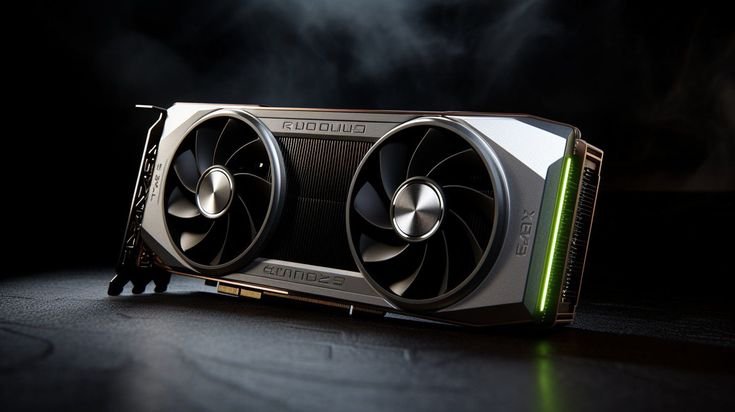What to Expect from the Upcoming Nvidia RTX 5090 Graphics Card
Introduction
As the world of gaming and content creation continues to advance rapidly, graphics cards remain at the forefront of technology innovation. Nvidia’s upcoming RTX 5090 graphics card is generating significant buzz among gamers and professionals alike. As we look ahead to its expected release in 2024, let’s explore what we can anticipate regarding specifications, features, and overall performance.
Table of Contents
What to Expect
1. Architecture and Performance Enhancements
The Nvidia RTX 5090 is expected to leverage the next-generation Ada Lovelace architecture, which will enhance performance metrics significantly compared to its predecessor, the RTX 4090. Here’s what we anticipate:
- Increased CUDA Cores: The RTX 5090 is rumored to feature a substantial increase in CUDA cores, potentially exceeding 20,000. This increase will enhance parallel processing capabilities, leading to improved performance in rendering and real-time graphics processing.
- Boosted Clock Speeds: We can expect higher base and boost clock speeds, contributing to improved performance and responsiveness in gaming and creative applications. A clock speed of around 2.5 GHz is being speculated, pushing the limits of what’s achievable in current graphics technology.

2. Enhanced Ray Tracing and AI Capabilities
Ray tracing has become a benchmark feature for modern graphics cards, and Nvidia is expected to take this to the next level with the RTX 5090.
- Next-Gen Ray Tracing Cores: The new architecture is likely to introduce more advanced ray tracing cores, allowing for better handling of real-time ray-traced effects without a significant performance drop. This will enable more realistic lighting, shadows, and reflections in games, making the visual experience even more immersive.
- AI-Driven Performance: With the continued evolution of AI technologies, the RTX 5090 will likely feature improved Tensor cores, enhancing AI-driven features like DLSS (Deep Learning Super Sampling). This could allow for higher frame rates and better image quality without taxing the GPU significantly.
3. Increased Memory and Bandwidth
Memory capacity and bandwidth are crucial factors that determine a graphics card’s performance, particularly at higher resolutions.
- GDDR7 Memory: The RTX 5090 is expected to utilize GDDR7 memory, which could deliver faster speeds and improved efficiency compared to GDDR6X. With rumors of up to 24 GB of VRAM, gamers and professionals working with high-resolution textures and demanding applications will benefit from smoother performance.
- Wider Memory Bus: An increase in memory bus width (potentially up to 512 bits) could lead to higher memory bandwidth, allowing for faster data transfer between the GPU and memory. This enhancement will be especially advantageous in memory-intensive applications such as 4K gaming and 3D rendering.

4. Thermal Management and Power Efficiency
As graphics cards become more powerful, efficient thermal management becomes essential to maintain performance and longevity.
- Advanced Cooling Solutions: Nvidia may implement new cooling technologies for the RTX 5090, including improved vapor chamber designs and larger heatsinks, ensuring optimal cooling under heavy loads. This will help maintain performance without the risk of thermal throttling.
- Power Efficiency: The RTX 5090 is likely to be more power-efficient due to architectural improvements, allowing it to deliver more performance per watt. This could lead to a lower TDP (Thermal Design Power), which is beneficial for system builders looking to create efficient gaming rigs.
5. Connectivity and Features
The next-generation graphics card will likely support the latest connectivity standards to keep pace with evolving technology.
- HDMI 2.1 and DisplayPort 2.0 Support: The RTX 5090 is expected to support HDMI 2.1 and DisplayPort 2.0, allowing for higher refresh rates at 4K and even 8K resolutions. This will enable gamers to fully utilize high-refresh-rate monitors and experience smoother gameplay.
- Nvidia Features: Expect to see the continuation of Nvidia’s ecosystem features such as Reflex (for lower latency), Broadcast (for improved streaming capabilities), and the introduction of new technologies that enhance the gaming and streaming experience.
6. Price and Availability
While the specifics around pricing and availability are still speculative, previous trends can offer some insights.
- Price Point: The RTX 5090 is expected to be positioned at a premium price point, likely around the $1,500 mark or higher. This aligns with Nvidia’s previous flagship offerings, reflecting the high-end performance and features expected from the card.
- Availability: Given the high demand for GPUs and ongoing supply chain issues, availability may be a concern initially. Gamers should be prepared for potential shortages, especially during the launch window.

Conclusion
The Nvidia RTX 5090 is set to be a game-changer in the graphics card market, offering significant advancements in performance, memory, and features. As the release date approaches, excitement continues to build among gamers and professionals alike, eager to experience the next generation of graphics technology.
If you’re planning to upgrade your gaming rig or embark on content creation, keeping an eye on the RTX 5090’s release will be crucial. With its cutting-edge technology, the RTX 5090 promises to redefine the boundaries of gaming and graphics performance, ensuring that gamers and creators alike have the tools they need to push their experiences to the next level.




